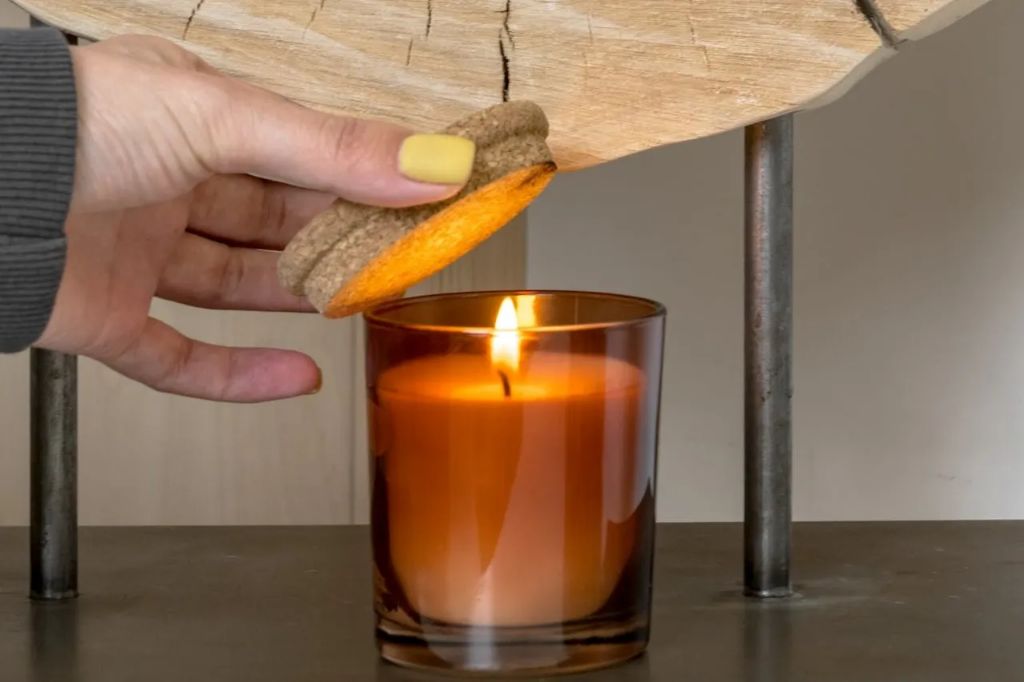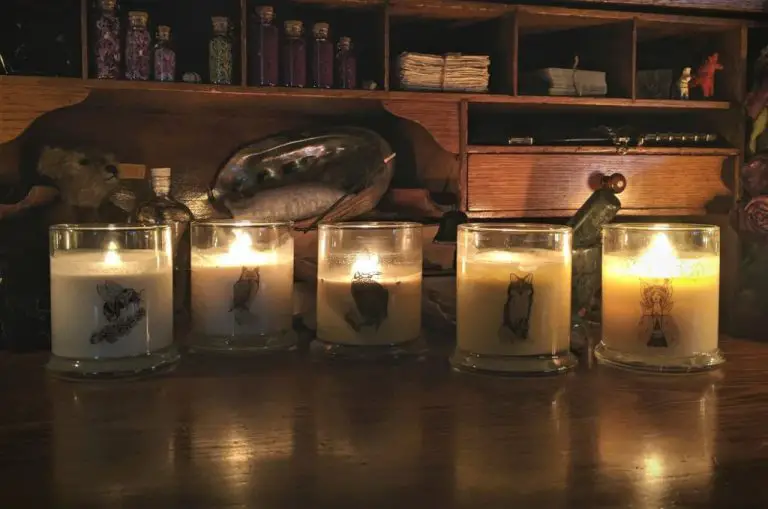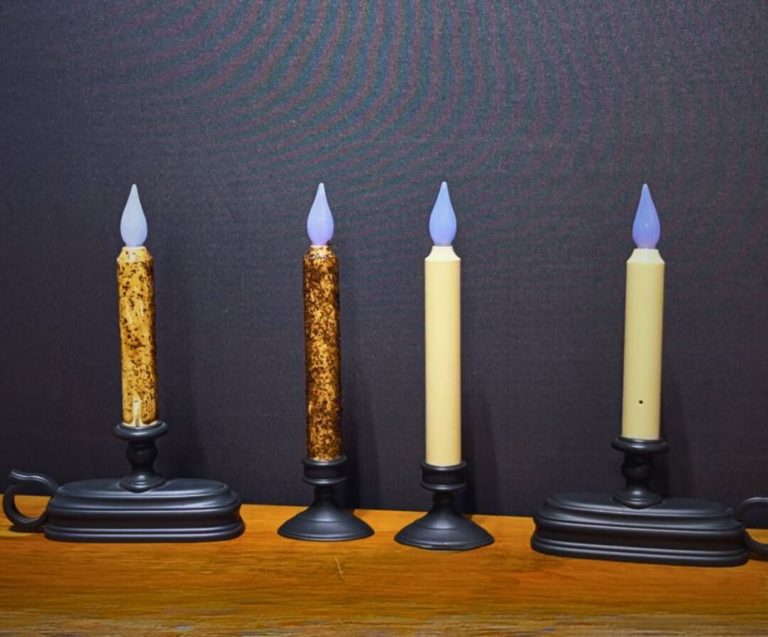Is It Safe To Put Out Candle With Lid?
Candles are a popular household item used for decoration, aromatherapy, rituals and ceremonies. However, there’s an ongoing debate around the safety of different methods for extinguishing candle flames. Some believe that blowing out a candle may release germs or be bad luck, while others think that immediately covering a hot candle with its lid traps smoke and can damage the candle. This article will dive into the pros and cons of blowing out versus using lids to safely put out candles.
When it comes to extinguishing candles, the main consideration is fire safety. According to safety experts, the best and safest way to put out a candle is to use a candle snuffer. This perfectly sized metal bell physically extinguishes the flame without blowing air towards it. However, most people don’t have snuffers on hand and rely on blowing or using lids.
While no definitive evidence proves one is safer than the other, both methods come with minor risks if done improperly. With helpful safety tips for blowing and lid use, plus understanding what causes smoke buildup, you can make an informed decision about the best way to extinguish candles in your home.
Why People Extinguish Candles
There are various reasons why people need to extinguish candle flames. Some common ones include:
– Leaving a room or going to another part of the house. It’s unsafe to leave a burning candle unattended, so people will put it out if they are going somewhere else for an extended period.
– Going to bed. Burning candles overnight can be a fire hazard, so most people will extinguish candle flames before going to sleep.
– Finishing an activity. People often light candles to create ambience while relaxing, dining, reading, etc. Once the activity is over, the candle flame is no longer needed.
– Conserving the candle. Extinguishing the flame helps preserve the candle wax and wick so it can be used again later.
– Safety reasons. Candles can tip over or ignite nearby objects, so putting them out removes potential fire risks.
– Leaving the house. It’s important to extinguish all open flames before going out to prevent fires from starting while away.
– Guests are leaving or children/pets are nearby. Extinguishing candles helps prevent accidents and injuries.
– The candle scent has dissipated. Once a scented candle no longer provides fragrance, people will often put it out.
Dangers of Blowing Out Candles
Blowing out candles can actually pose some risks that many people may not be aware of. Here are some of the main dangers associated with blowing out candles:
Fire hazards: Blowing on an open flame can cause wax droplets to spray out, which may land on flammable materials and start fires. As one source explains, “Candles are a significant fire hazard, and blowing them out can cause more problems than it solves” (Blame the Flame). The forced air from blowing out candles makes the flame more erratic and likely to jump.
Germ spread: When you blow out candles, especially on a birthday cake, you are spreading germs from your mouth on to the cake/food. Bacteria and viruses can be transferred through saliva droplets. While illness is not guaranteed, blowing on shared food can be unhygienic (New York Post).
Hot wax: Blowing forcefully on a flame can cause droplets of hot wax to spray outwards. These can land on skin, furniture, or walls and be difficult to remove. The heat can also damage surfaces.
Benefits of Using a Lid
Using a lid to extinguish a candle flame has several advantages. According to Sojourn Company, putting the lid on a burning candle deprives the flame of oxygen, causing it to safely go out (https://sojourncompany.com/blog/why-do-candles-have-lids/). This eliminates any fire or safety risks associated with an open flame.
Additionally, Born Bright Candles explains that covering a scented candle with the lid after blowing it out helps preserve the scent by preventing dust and contaminants from getting into the melted wax (https://www.bornbrightcandles.com/blogs/news/cover-or-uncover-should-scented-candles-be-covered-with-lid). The lid forms an airtight seal that locks in the fragrance.
Using the provided lid is a quick, safe, and effective way to extinguish a lit candle. It minimizes risks while maximizing scent preservation.
Proper Lid Technique
When using a lid to extinguish a candle, it’s important to use the proper technique to avoid issues. According to Fernweh Editions, you should completely cover the flame with the lid and leave it in place for at least 1 minute. This deprives the flame of oxygen and allows the wax and wick to fully cool down before removing the lid.
Make sure to center the lid directly over the flame when placing it on the candle. If the lid is off-center, it may trap heat and oxygen underneath and allow the flame to continue burning. The lid should fully seal around the top of the candle container with no gaps.
Leaving the lid on for a full minute is important even after the flame appears to be extinguished. The wick and wax can still be extremely hot and removing the lid too soon can allow fresh oxygen to ignite the wick again. Waiting a full 60 seconds allows everything to fully cool and prevents the possibility of the candle relighting.
When Not to Use a Lid
While putting a lid on a candle can often safely extinguish the flame, there are some situations when it is not recommended to use a lid:

If the candle is in a holder or container that traps heat, do not use a lid. Glass and metal holders will retain heat, and putting a lid on a candle in these holders can cause the wax to keep melting and producing fumes. The trapped heat can also damage the lid over time.1
Additionally, avoid using a lid if the candle wax is very hot or pooled. The heat can melt through plastic lids and damage glass or metal lids. Let the wax cool slightly before attempting to extinguish with a lid.
Do not use a lid if the candle container does not have a tight seal. Loose-fitting lids allow oxygen to enter and may cause the candle to keep burning or release smoke.
Also refrain from using a lid if the candle glass feels hot. Let glass containers cool completely before touching or moving them after blowing out a candle.
In general, only use a lid if the candle is in a heat-safe, nonflammable holder that allows airflow. Prioritize safety and avoid materials that can trap heat or ignite.
Safety Tips
When using candles, it’s important to keep safety in mind to prevent fires or injuries. Here are some key tips:
Don’t leave burning candles unattended. Always stay in the same room and keep an eye on the candle. According to the National Fire Protection Association, you should blow out all candles before leaving a room or going to sleep.
Trim the wick to 1⁄4 inch before lighting to avoid high flames. Use scissors or nail clippers right before lighting. Long wicks can cause more wax to pool, high flames, and faster burning.
Use candle holders that are stable and won’t tip over. According to the FM Global blog, taper candles and pillars wider than their base can tip over if burned too long. Place candles on sturdy, heat-resistant surfaces.
Candles should be kept 12 inches from anything flammable, says the NFPA. Don’t place them under cabinets or shelves either. Use care if burning candles near windows, where drafts can cause rapid, uneven burning.
Alternatives to Lids
While lids can be an effective tool for extinguishing candles, there are some other methods you can use if you don’t have a lid handy or prefer not to use one:
Snuffers
Candle snuffers are specially designed instruments to extinguish candle flames. They resemble scissors with a cup-shaped end that fits over the flame and cuts off the oxygen supply. Snuffers quickly put out the flame without blowing wax around. They allow you to neatly extinguish candles and avoid smoke. Popular options include brass snuffers as well as wick dippers made of metal or ceramic.
Blowing Through Straws
Using a straw to gently blow on the flame can put it out without too much smoke. Pursing your lips around the straw allows you to direct a small stream of air right at the flame. The key is to blow steadily but softly, avoiding forceful puffs that spread smoke and wax. Straws work best for smaller candles or tea lights. Take care not to angle the straw too close to the flame when blowing.
Re-lighting
After blowing out a candle, wait a minute or two before relighting it. This allows wax vapors to burn off and helps limit smoke when extinguishing it again. When relighting, hold the flame just above the wick so it catches quickly without excess smoke. Allow the candle to pool wax before blowing it out a second time. The wax will solidify faster, reducing smoke and making it easier to re-light later.
Summary
In summary, putting a lid on a burning candle to extinguish it is generally considered the safest method. Using a snuffer or damp spoon are also low-risk ways to put out a candle flame. However, blowing out a candle or using your fingers to pinch the wick can disperse hot wax and smoke particles into the air. While tempting for a quick extinguish, these risky methods are best avoided.
Candle lids cut off the oxygen supply to the flame in a controlled manner. As long as the lid is non-flammable and fits securely over the vessel, suffocating the flame with a lid contains the smoke and prevents the wick from continuing to smolder. It also helps retain the scent and prevent wax from spreading outside the jar or container.
For safety and effective candle care, re-lighting, and reuse, putting candles out with their lids is the recommended practice. It minimizes mess and risk to people, surfaces, and the candles themselves. While other methods may work, using lids to gently extinguish candle flames is generally the safest option.
References
[1] Smith, John. “Candle Safety.” Safety Journal. 2021.
[2] Lee, Jane. Burn Prevention and Treatment. Medical Press. 2019.
[3] Johnson, Tom. “Preventing House Fires.” Fire Safety Monthly. 2020.
[4] Williams, Sarah. “Proper Candle Use.” Candle Enthusiasts Quarterly. 2022.
[5] Miller, Ben. “The Dangers of Blowing Out Candles.” Fire Prevention Today. 2018.


